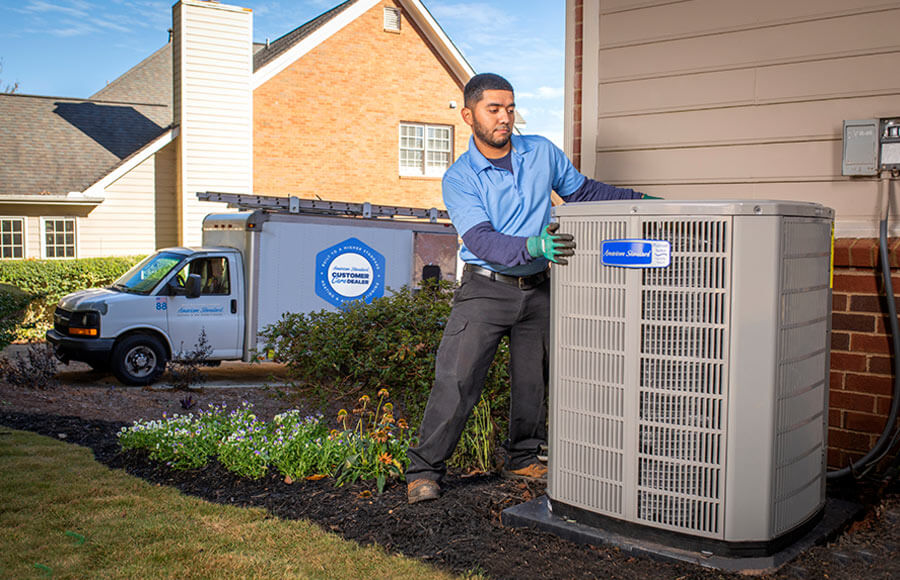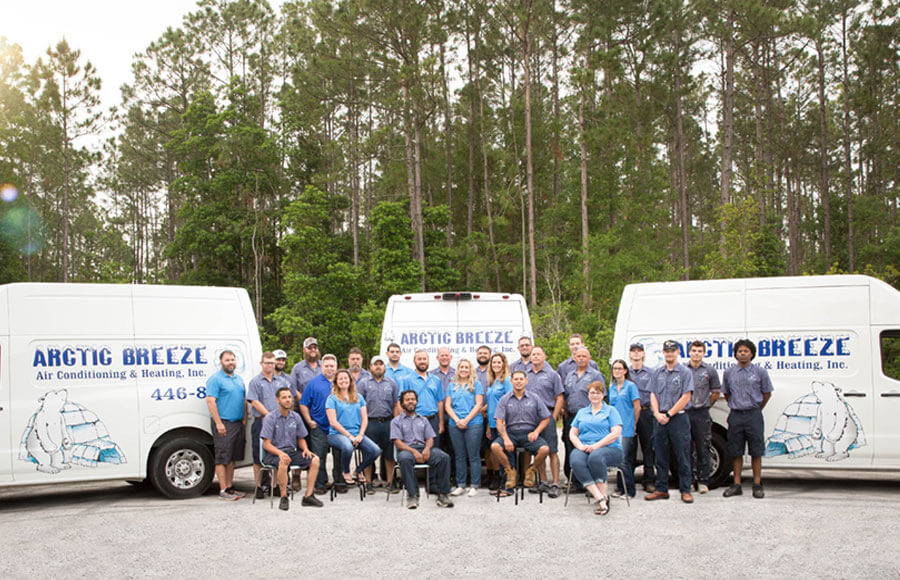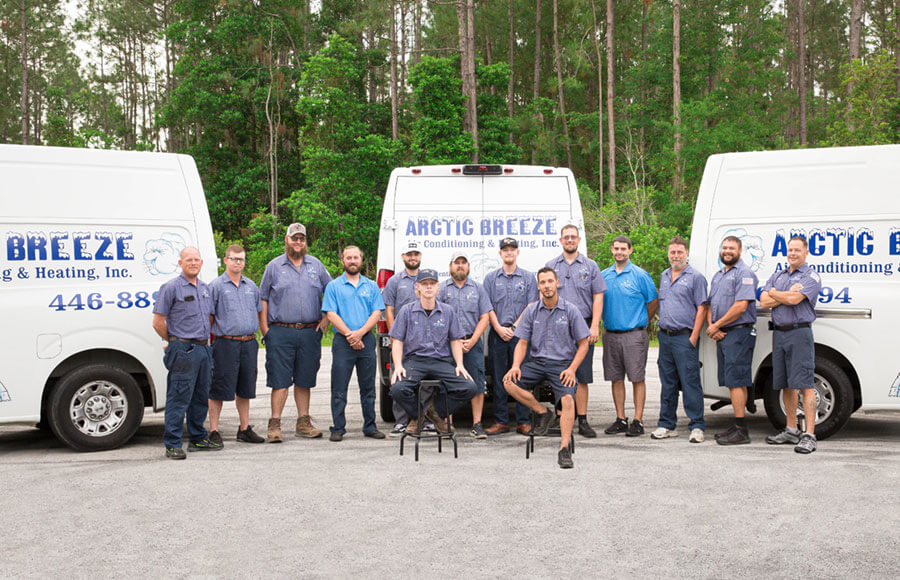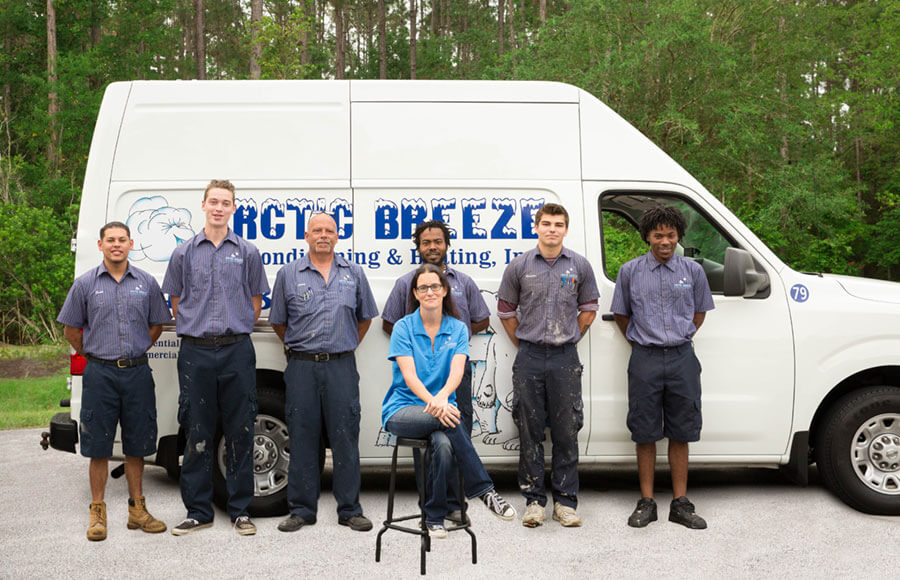Arctic Breeze Air Conditioning & Heating

Frequently Asked Questions About Arctic Breeze Air Conditioning & Heating
Welcome! At Arctic Breeze, we understand you might have questions about your air conditioning and heating systems. We've compiled a list of the most common inquiries to provide you with quick and easy answers.
1. How often should I have my HVAC system serviced?
We recommend having your HVAC system serviced at least twice a year – once in the spring before the cooling season and once in the fall before the heating season. This proactive approach helps ensure optimal performance, efficiency, and longevity of your equipment. Regular maintenance can also catch minor issues before they escalate into costly repairs.
Here's why regular servicing is important:
- Improved Efficiency: Clean filters and properly functioning components help your system run more efficiently, saving you money on energy bills.
- Extended Lifespan: Regular maintenance helps prevent wear and tear, extending the life of your HVAC equipment.
- Early Problem Detection: Technicians can identify and address minor issues before they become major problems.
- Improved Air Quality: Clean filters and coils help remove dust, pollen, and other allergens from your indoor air.
- Warranty Compliance: Many manufacturers require regular maintenance to keep your warranty valid.
2. What are the signs that my air conditioner or furnace needs repair?
Several signs indicate that your air conditioner or furnace needs professional attention. Addressing these issues promptly can prevent further damage and costly repairs. Here are some common warning signs:
- Unusual Noises: Banging, rattling, hissing, or whistling sounds could indicate mechanical problems, refrigerant leaks, or other issues.
- Reduced Airflow: Weak or inconsistent airflow from vents suggests a problem with the blower motor, ductwork, or compressor.
- Inconsistent Temperatures: Uneven heating or cooling throughout your home could indicate a problem with zoning, ductwork, or system capacity.
- Foul Odors: Musty, burning, or chemical smells coming from your vents warrant immediate attention and could indicate mold growth, electrical problems, or gas leaks. If you suspect a gas leak, evacuate your home immediately and call your gas company or 911.
- Increased Energy Bills: A sudden spike in your energy bills without a corresponding change in usage could indicate an inefficient or malfunctioning HVAC system.
- Water Leaks: Water leaking from your air conditioner or furnace could indicate a clogged drain line, refrigerant leak, or other problems.
- System Won't Turn On or Off: If your system fails to turn on or shuts off unexpectedly, there could be a problem with the thermostat, electrical components, or safety switches.
If you notice any of these signs, contact Arctic Breeze immediately. Ignoring these issues can lead to more significant damage and higher repair costs down the road.
3. What size air conditioner or furnace do I need for my home?
Determining the correct size air conditioner or furnace for your home is crucial for optimal comfort, efficiency, and system lifespan. An oversized unit will cycle on and off frequently, leading to uneven temperatures and wasted energy. An undersized unit will struggle to maintain the desired temperature, especially during extreme weather.
Several factors influence the size of the HVAC system you need, including:
- Square Footage: The size of your home is a primary factor in determining the appropriate BTU (British Thermal Unit) output for both air conditioners and furnaces.
- Climate: The climate in your area will affect the heating and cooling load required to maintain a comfortable temperature.
- Insulation: The level of insulation in your walls, attic, and windows significantly impacts the amount of heat gained or lost.
- Window Efficiency: The type and efficiency of your windows affect heat transfer and can impact the required system size.
- Orientation: The direction your home faces can affect solar heat gain.
- Ceiling Height: Higher ceilings increase the volume of air that needs to be heated or cooled.
- Number of Occupants: The number of people living in your home can affect the heating and cooling load.
The most accurate way to determine the correct size HVAC system is to have a qualified HVAC technician perform a Manual J load calculation. This detailed analysis considers all the factors mentioned above to determine the precise heating and cooling requirements for your home. Contact Arctic Breeze for a professional load calculation and system sizing consultation.
4. What is a SEER rating, and why is it important?
SEER stands for Seasonal Energy Efficiency Ratio. It's a measure of the cooling efficiency of an air conditioner or heat pump. The higher the SEER rating, the more energy-efficient the unit is.
Think of SEER like miles per gallon (MPG) for a car. A higher MPG means better fuel efficiency; similarly, a higher SEER means better energy efficiency. The minimum SEER rating currently required by the Department of Energy is 14 for most regions, but units with SEER ratings of 16 or higher are readily available and offer significant energy savings.
Why is SEER important?
- Lower Energy Bills: Higher SEER units use less electricity to cool your home, resulting in lower monthly energy bills.
- Environmental Benefits: By using less energy, higher SEER units reduce your carbon footprint and help protect the environment.
- Long-Term Cost Savings: Although higher SEER units may have a higher initial cost, the long-term energy savings can offset the difference over the lifespan of the system.
- Increased Home Value: Energy-efficient appliances can increase the value of your home.
When choosing a new air conditioner, consider the SEER rating as a key factor in your decision. Arctic Breeze can help you select a unit with the right SEER rating for your needs and budget.
5. What is an AFUE rating, and how does it relate to furnaces?
AFUE stands for Annual Fuel Utilization Efficiency. It measures the heating efficiency of a furnace by indicating how much of the fuel's energy is converted into usable heat. The AFUE rating is expressed as a percentage.
For example, a furnace with an AFUE of 95% means that 95% of the fuel it consumes is converted into heat for your home, while the remaining 5% is lost up the chimney. The higher the AFUE rating, the more efficient the furnace is and the less fuel it wastes.
The minimum AFUE rating currently required for new furnaces is 80%. However, high-efficiency furnaces with AFUE ratings of 90% or higher are available and can significantly reduce your heating costs.
Why is AFUE important?
- Lower Heating Bills: Higher AFUE furnaces use less fuel to heat your home, resulting in lower monthly heating bills.
- Environmental Benefits: By using less fuel, higher AFUE furnaces reduce your carbon footprint and help protect the environment.
- Long-Term Cost Savings: Although higher AFUE furnaces may have a higher initial cost, the long-term fuel savings can offset the difference over the lifespan of the system.
When choosing a new furnace, consider the AFUE rating as a key factor in your decision. Arctic Breeze can help you select a unit with the right AFUE rating for your needs and budget.
6. What are the benefits of a smart thermostat?
Smart thermostats offer a range of benefits beyond simply controlling the temperature in your home. These connected devices provide enhanced control, energy savings, and convenience.
Here are some key benefits of smart thermostats:
- Remote Control: Control your thermostat from anywhere using your smartphone, tablet, or computer. This allows you to adjust the temperature before you arrive home, ensuring a comfortable environment upon arrival.
- Programmable Schedules: Create customized heating and cooling schedules based on your lifestyle and preferences. Smart thermostats can automatically adjust the temperature when you're away from home or asleep, saving energy and money.
- Learning Capabilities: Some smart thermostats learn your habits and automatically adjust the temperature based on your preferences.
- Energy Monitoring: Track your energy usage and identify areas where you can save money. Smart thermostats provide detailed reports on your heating and cooling consumption.
- Geofencing: Use your smartphone's location to automatically adjust the temperature when you leave or approach your home. This ensures optimal comfort and energy savings.
- Integration with Smart Home Systems: Connect your smart thermostat to other smart home devices, such as lighting systems and voice assistants, for seamless control and automation.
- Alerts and Notifications: Receive alerts on your smartphone if the temperature in your home is too high or too low, or if there's a problem with your HVAC system.
Arctic Breeze can help you choose and install the right smart thermostat for your home and needs. We can also provide guidance on setting up and using your smart thermostat to maximize its benefits.
7. What steps can I take to improve my indoor air quality?
Indoor air quality is an important factor in your overall health and well-being. Poor indoor air quality can contribute to allergies, asthma, and other respiratory problems. Fortunately, there are several steps you can take to improve the air quality in your home.
- Change Air Filters Regularly: Replace your air filters every 1-3 months, or more often if you have pets or allergies. Clean filters remove dust, pollen, and other allergens from the air.
- Maintain Your HVAC System: Schedule regular maintenance for your HVAC system to ensure it's running efficiently and not contributing to indoor air pollution.
- Control Humidity Levels: Maintain a humidity level of 30-50% to prevent mold growth and dust mite infestations. Use a dehumidifier or humidifier as needed.
- Ventilate Your Home: Open windows and doors regularly to allow fresh air to circulate. Use exhaust fans in bathrooms and kitchens to remove moisture and odors.
- Use Air Purifiers: Consider using air purifiers with HEPA filters to remove airborne particles and allergens.
- Avoid Smoking Indoors: Smoking indoors releases harmful pollutants into the air.
- Use Low-VOC Products: Choose paints, cleaning products, and other household items that are low in volatile organic compounds (VOCs).
- Clean Regularly: Dust, vacuum, and mop regularly to remove dust, pollen, and pet dander.
- Control Pests: Pests can contribute to indoor air pollution. Take steps to control pests in your home.
- Test for Radon: Radon is a radioactive gas that can seep into homes from the ground. Test your home for radon and take steps to mitigate it if necessary.
Arctic Breeze offers a variety of indoor air quality solutions, including air purifiers, humidifiers, dehumidifiers, and UV air sanitizers. Contact us for a consultation to determine the best solutions for your needs.
We hope these FAQs have been helpful. If you have any other questions or need assistance with your air conditioning and heating needs, please don't hesitate to contact Arctic Breeze Air Conditioning & Heating. We are here to help you stay comfortable and healthy year-round!










